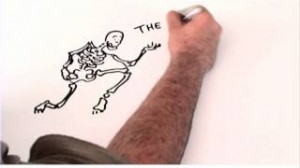Headaches-The Dental Connection

What A Bad Bite Is Doing To You
TMD explained by Dr. Curtis Westersund
(Click on the above image to watch the video)
What is Neuromuscular Dentistry, also known as Physiologic Dentistry?
|
| Headache | TMJ Pain | TMJ Noise | Limited Opening | Ear Congestion |
| Facial Pain | Jaw Clenching | Teeth Grinding | Sensitive Teeth | Dizziness |
| Difficulty Swallowing | Ringing In the Ears | Neck, shoulder or back pain |
Achieving Truly Relaxed Muscles
To help your muscles reach a true relaxed state, a device called the Myomonitor is used to deliver gentle electrical stimulation to your muscles. The Myomonitor is a battery operated electrical muscle stimulator. Mild electrical stimulation is delivered through adhesive patch electrodes attached over nerves that control specific muscle groups. The virtually painless stimulus delivered by the Myomonitor will cause your facial and jaw muscles to twitch or” pulse” once every one half seconds. After about 40 to 60 minutes, this electrically induced “exercise” will allow your muscles to overcome their programming and go to a relaxed state.
Why is Evaluation of Physiologic Function Important?
The state of the teeth and the joints very often cause the muscles to accommodate. Evaluation of the hard tissue alone does not provide insight to the true status of the occlusal system. This is why the Neuromuscular Dentist uses objective, scientific documentation methods in the comprehensive evaluation of occlusion. Through the use of jaw tracking, electromyography and joint sound recording, a complete analysis of the function (or dysfunction) of the masticatory system is accomplished.
The Right Bite Can Relieve Painful Symptoms
It is estimated that 40-50 million Americans suffer symptoms related to a bad bite and jaw misalignment.
- Headaches and Migraines
- Pain or pressure in and about the eyes
- Sinus problems
- Ringing in the ear
- Stuffiness in the ear
- Subjective hearing loss
- Pain in or around the jaw
- Stiffness in the shoulders and back
- Radiating pain down your arm to your fingers
- Snoring
- Dizziness
- Habits or grinding teeth
- Clenching teeth
- Sensitive teeth
- Abnormal tooth wear
